Our Blog - Paris 2015 - Day 3
RACE DAY! Sunday was the La Parisienne and it started just at the bottom of the hill from Trocadero. The large buildings you see behind me are the Palais de Chaillot. Chaillot is the name of a former village that stood on this hill. Initially there was another Palais de Chaillot but it was demolished and this new building was built for the International Expo of 1937. The same foundation was used but, unlike the old palais, the new two wings of the new palace are independent buildings and there is no central element to connect them. This leaves an open view from the Place du Trocadero, through the buildings, to the Eiffel Tower on the opposite side of the Seine. The buildings today are used for several museums. An interesting tidbit: It was on the front terrace of the palace that Adolf Hitler was pictured during his short tour of the city in 1940, with the Eiffel Tower in the background. This became an iconic image of the Second World War. The fountains that you see are part of the Jardins du Trocadero, which goes from the Palais down to the Seine at the Pont d'Iena bridge.
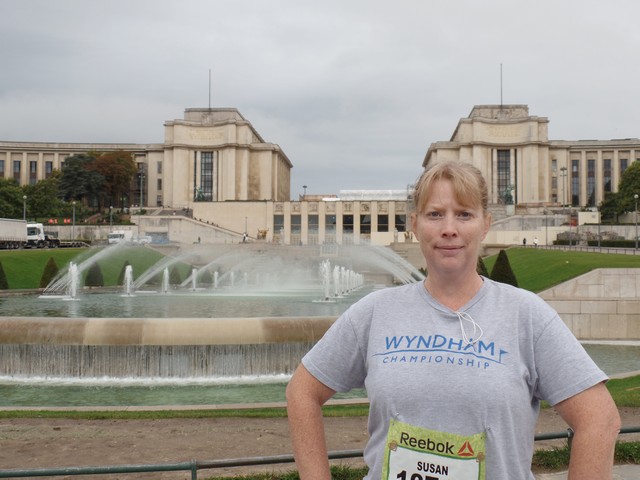

There were over 30,000 women runners this year, and we went off in waves of runners every 7 minutes. So here is a view from where I was with all of the ladies in front of me. Note that it took me over an hour from the start of the race until I actually started. The start-line is WAY down nearer to the building. When I turned around, I could see the Eiffel Tower looming over me and you can see the lovely grey skies. It was slightly overcast in the first pictures but in these, you can definitely see the cloud cover. The last picture here is the starting line with the countdown ... so just over 5 minutes before I started. It was slightly drizzling on me through almost all of the race.



Tom was taking pictures while I was running the race although he actually didn't get any of me running! Of course, it is difficult when he is trying to find (almost literally) a needle in a haystack, since he is looking for 1 running out of 30,000 without really knowing how fast I am actually running. I ended up running faster than he had expected me to. I saw him at the 1k turn but he didn't see me, and then coming up to 4k, I saw him sitting over at a bus stop. I ran over and got his attention and he wasn't expecting me yet. So anyway .. no pictures of me (well, I have a couple that I got from the professional photographers that were grabbing pictures on the course). He tried to get a view of all of the different things going on. Throughout the entire race course, there were different stands setup with bands, singers, drummers, all kinds of things. It is really a dynamic atmosphere going around running. Tom did get a picture of a couple other runners ... to show that there really *was* a race :-)
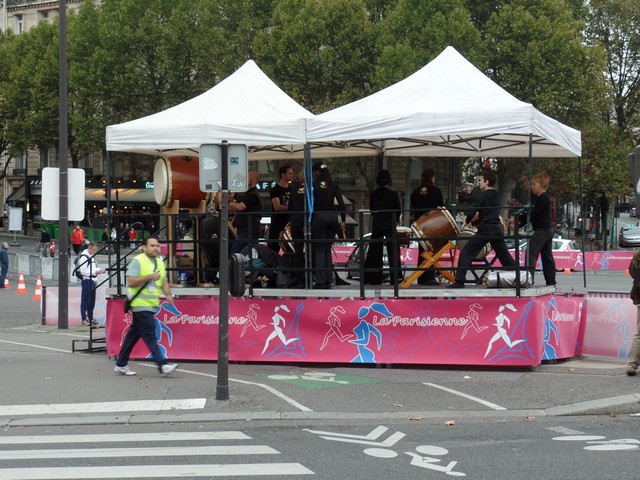
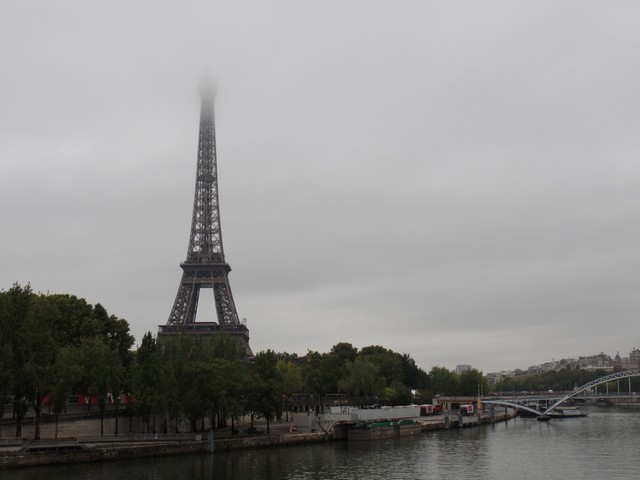
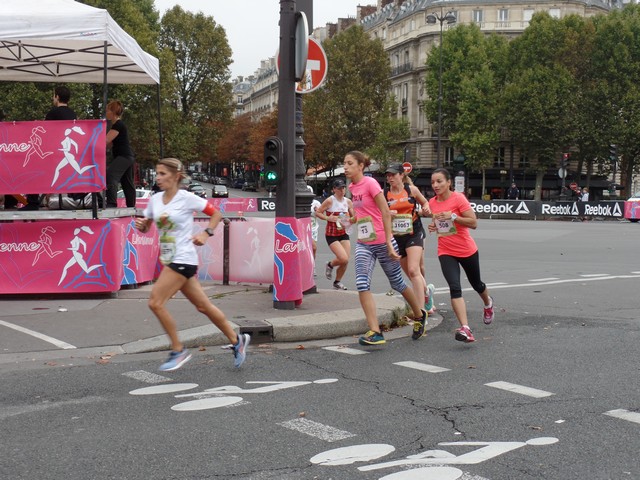
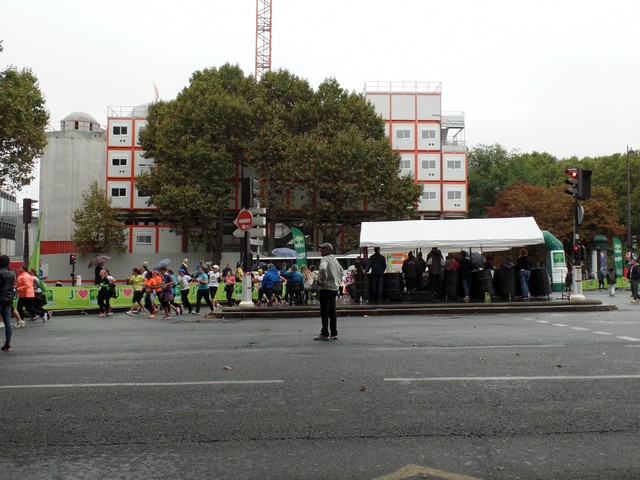
So these are the pictures that were taken near the finish line and my diploma.
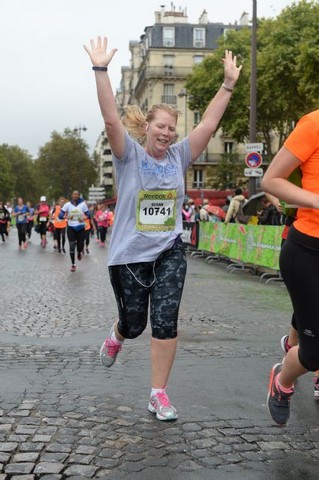
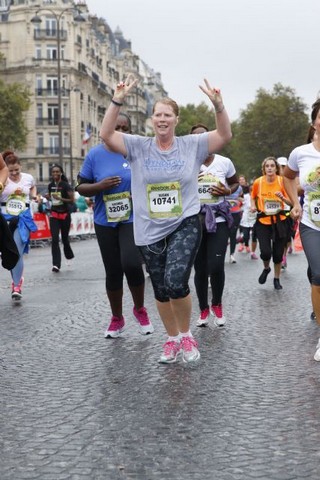

After a good race, the next thing you want to do is ... EAT! Yep, lunch time! We headed up to the Montmartre area to get "la meilleure baguette de traditional de Paris" ... the best traditional baguette in Paris for 2015. The boulangerie is called Le Grenier a Pain Abbesses. We arrived around 2pm and there was still a line out the door. A typical boulangerie ... it is purely a take-away place. We patiently waited in line and picked up our baguette, a sandwich (on a baguette) and an eclair to share (remember the ... we eat dessert with every meal while on vacation in France statement?).
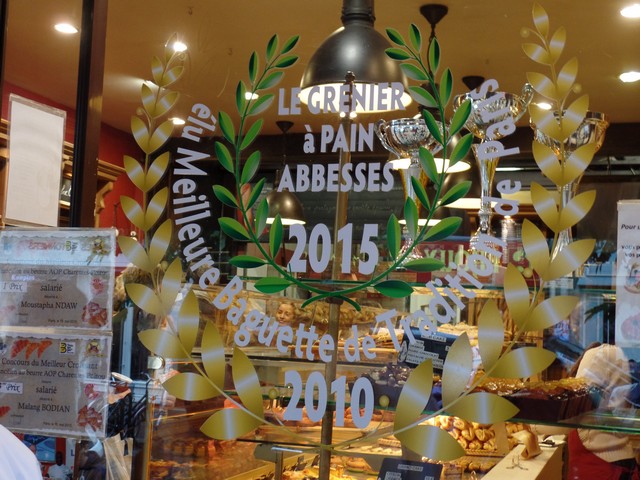
Then we had to work off all of that bread and did a leisurely walk around Montmartre. The area has one of the only large hills in the Paris area. Archeological excavations show that it had been occupied since Gallo-Roman times. It is also famous from the text Miracles of Saint-Denis, written in 855, which told the story about how Saint Denis, a Christian bishop, was decapitated on the hilltop in 250 AD. Somehow he didn't die at that point, collected his head, and carried for some time, descending the North slope of the hill, where he died. The hill also became home to several churches and abbeys, including the 2nd most famous church, the Basilica of Sacre Coeur.
By the 15th century, the north and northeast slopes of the hill were the site of a village surrounded by vineyards, gardens and orchards of peach and cherry trees. The first mills were built on the western slope in 1529, grinding wheat, barley and rye. There were thirteen mills at one time, though by the late nineteenth century only two remained.
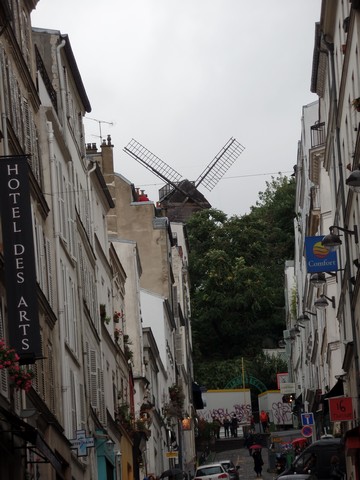
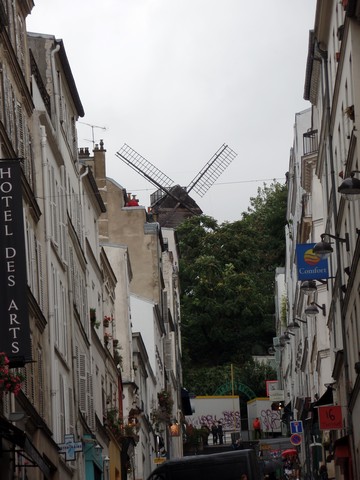
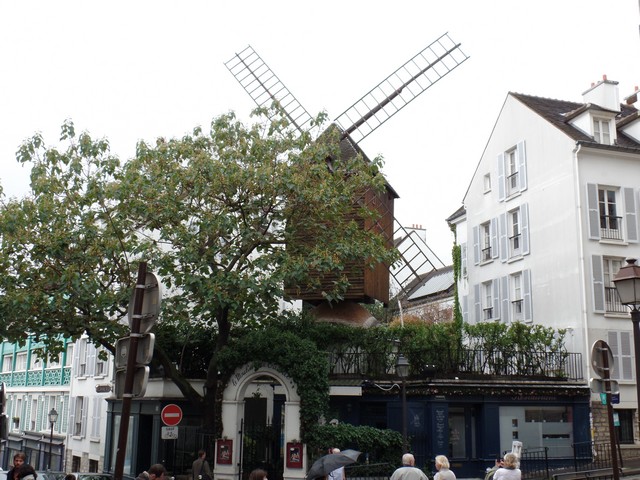
The Church of Saint Peter of Montmartre is the oldest surviving church in Paris, dating back to around 1147 (according to the sign out front) and still has daily masses. From 1147 to 1680, it was the home to the Royal Monastery of the Benedictines.
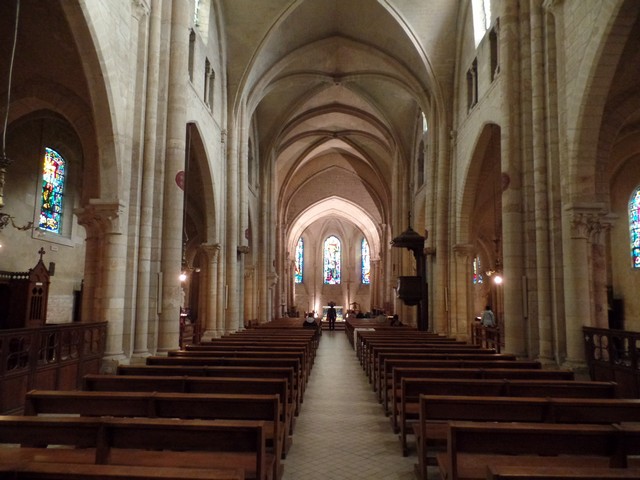
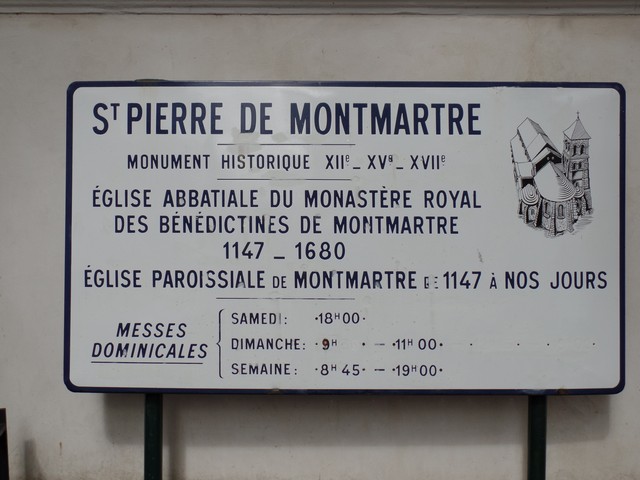
At the beginning of the twentieth century, during the Belle Epoque, many artists had studios or worked in or around Montmartre, including Salvador Dalí, Amedeo Modigliani, Claude Monet, Piet Mondrian, Pablo Picasso, Camille Pissarro and Vincent van Gogh. Being on a hilltop, they found that the light was better there than in other places in the city. Not that you could tell from today's pictures ...
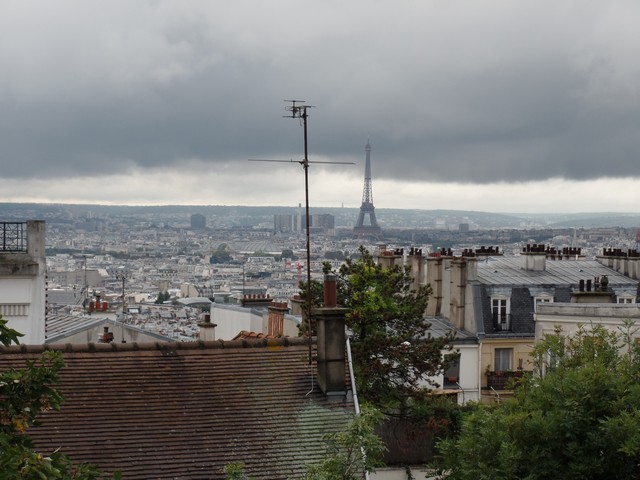
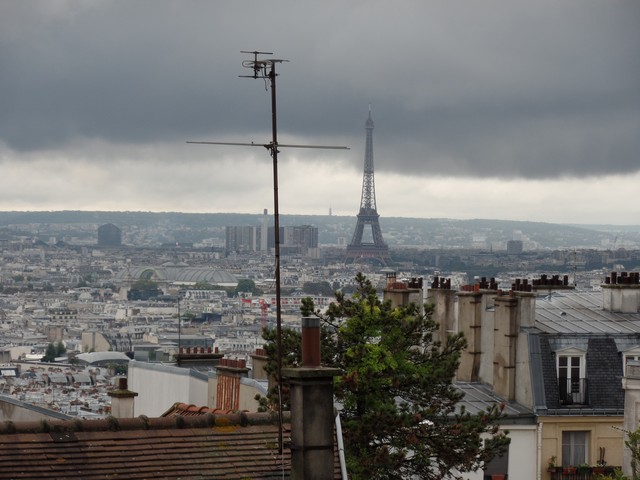
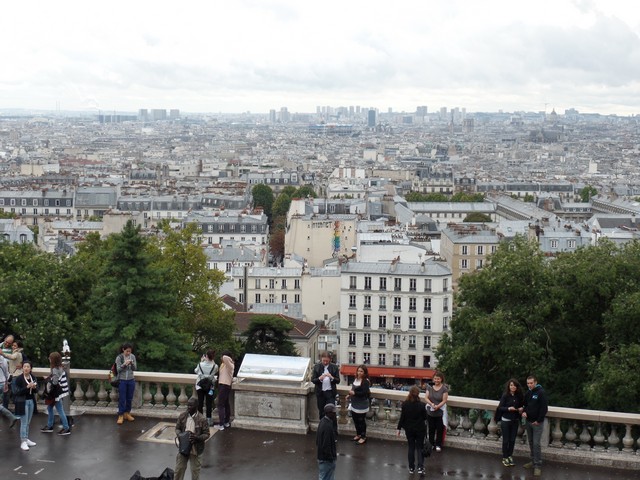
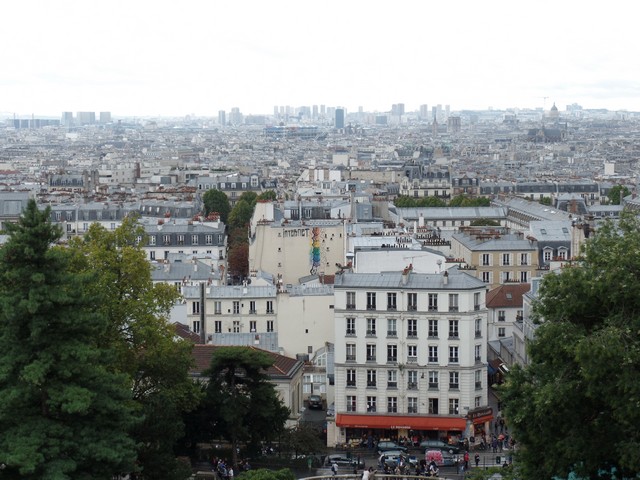
Looking up at the Basilica of Sacre Coeur, you can see why this is such an iconic church. The overall style of the structure shows a free interpretation of Romano-Byzantine features, an unusual architectural vocabulary at the time, which was a conscious reaction against the neo-Baroque excesses of the Palais Garnier. Many design elements of the basilica symbolize nationalist themes: the portico, with its three arches, is adorned by two equestrian statues of French national saints Joan of Arc (1927) and King Saint Louis IX, both executed in bronze by Hippolyte Lefebvre; and the nineteen-ton Savoyarde bell (one of the world's heaviest), cast in 1895 in Annecy, alludes to the annexation of Savoy in 1860.
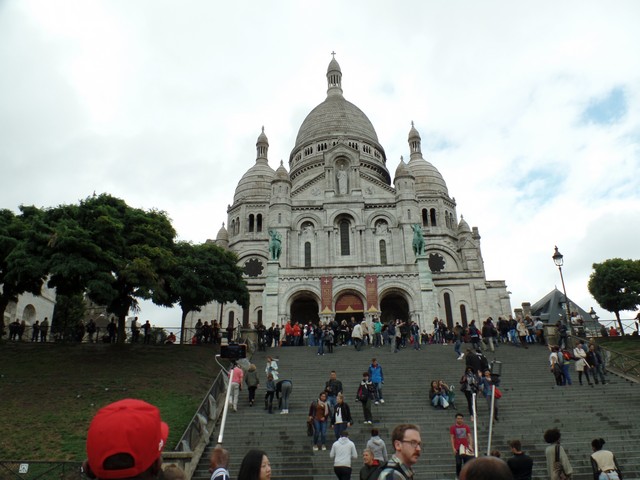
As we headed down, we stopped at one of the levels to grab a picture of the fountain.
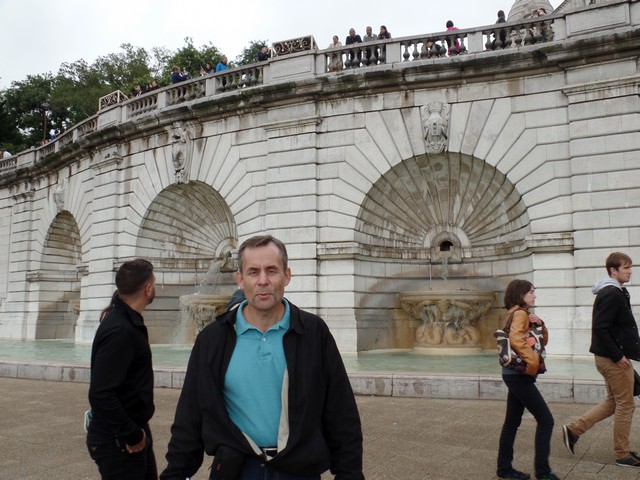
From there, we headed to the Marais since it was Sunday and it is one of the more lively areas on Sunday's. The Marais was just outside of the walls of Paris in 1240 when the Order of the Temple built a church there, turning it into an attractive area. Soon, several kings (Charles I of Anjou and King Charles V) built residences there and by 1605, the Marais was the French nobility's favorite place of resident, building many urban mansions there such as the Hotel de Sens, Hotel de Sully, the Hotel de Beauvais, Hotel Carnavalet, Hotel de Guenegaurd, and Hotel de Soubise. As you can guess, the word "Hotel" here means "hotel particulier" which is really a grand "city" house or "townhouse". Interesting tidbit ... historically in French contexts, an ordinary maison (house) was built as part of a row, sharing party walls with the houses on either side and directly fronting on a street, an hotel particulier was often free-standing. Nowadays, we think of a townhouse as ones that share walls and a house as one that is free-standing.
Near the end of the 19th century, the nobility moved to the Faubourg Saint-Germain area, and the Marais became the main Jewish community. It is still a major centre of the Paris Jewish community, which is one of the reasons that it is a busy area on Sunday. It is also now one of the main areas for art galleries as well as being the home to many trendy restaurants, fashion houses, and hip galleries.
One of the hotel particulier's is the Hotel d'Angouleme Lamoignon, which today houses the Bibliotheque Historique de la Ville de Paris. The old city library was located in the Paris Hotel de Ville (city hall), which fire destroyed in May 1871. In 1872, the city moved to create a library which contains documents dating from the 16th century through the present on the history of Paris and the Ile-de-France region. The building was was built in the Renaissance style and dates from 1584. Originally, the architect was thought to be Baptiste Androuet du Cerceau but an archival discovery of 1984 has shown that Louis Metezeau was the architect. Here you can see the watchtower at the corner of rue des Francs-Bourgeois and rue Pavee.
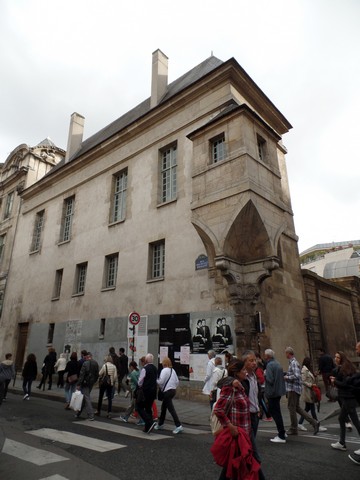
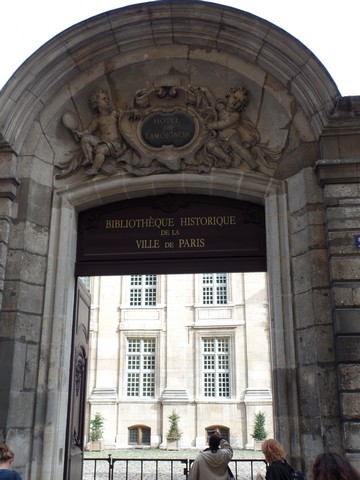
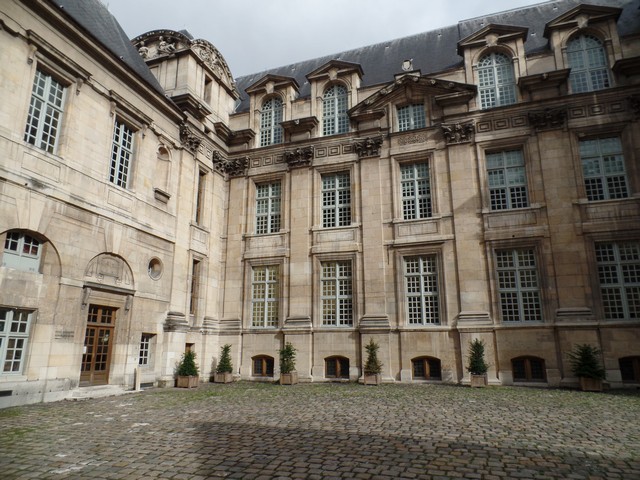
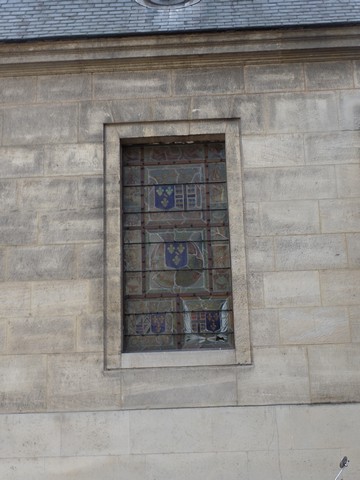
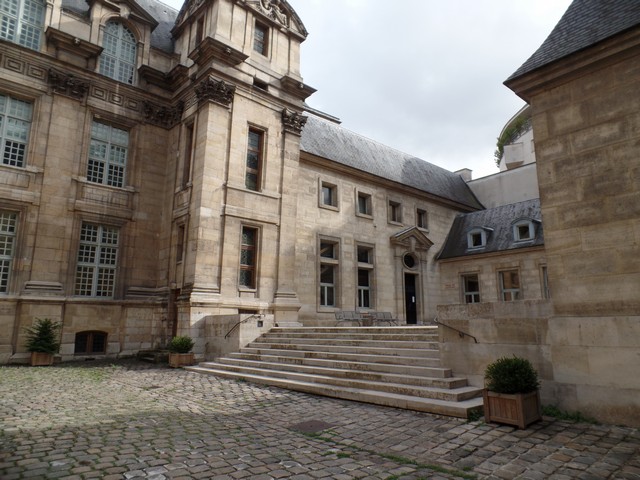
As we walked through the Marais, we came across this little band, playing on the sidewalk.
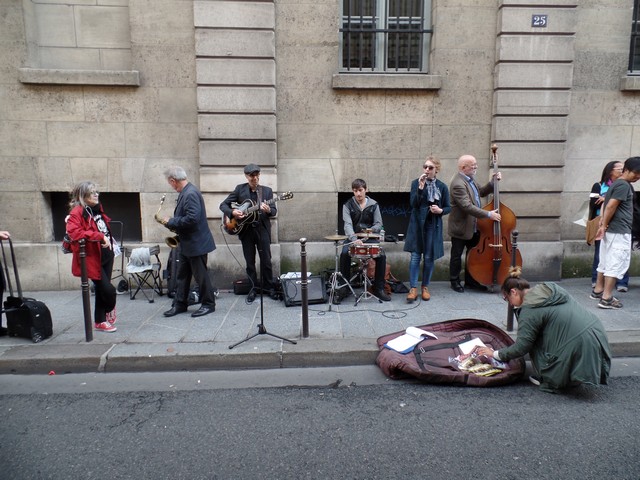
Dinner was at Cafe des Abattoirs ... abattoir being the french word for a slaughterhouse. This restaurant is run by two sisters, Caroline and Sophie Rostang, daughters of the Michelin-starred chef Michel Rostang. The name is a nod both to the slaughterhouses of the defunct market of Les Halles and to their great-grandfather, whose hotel-cafe in Pont-de-Beauvoisin featured a glass-gilded Art Deco sign of the same name.
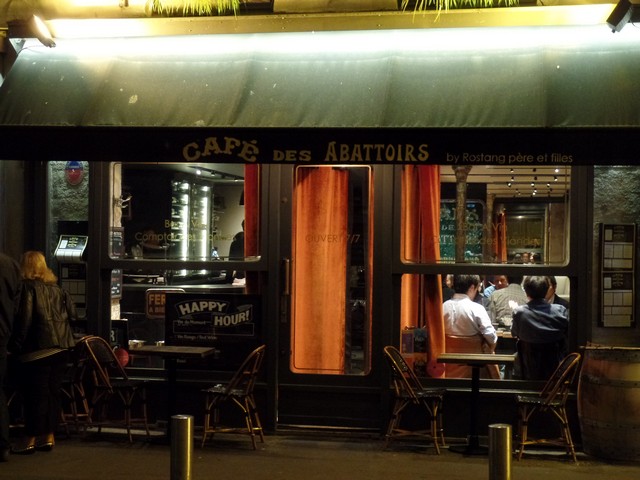
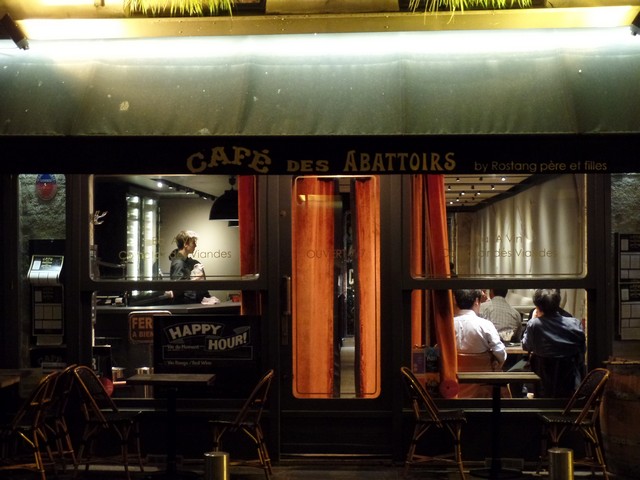
The interior is a little different than a lot of French restaurants as one wall is padded and there is an outline of a pig on it.
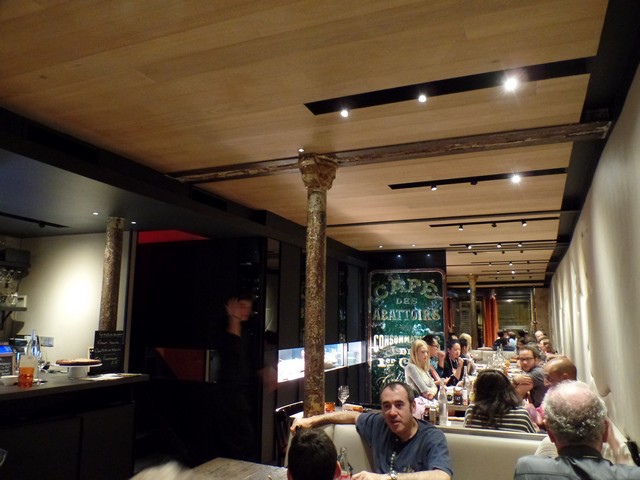
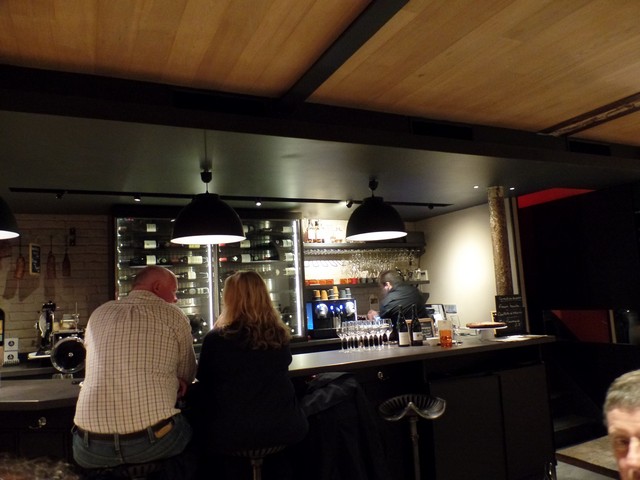
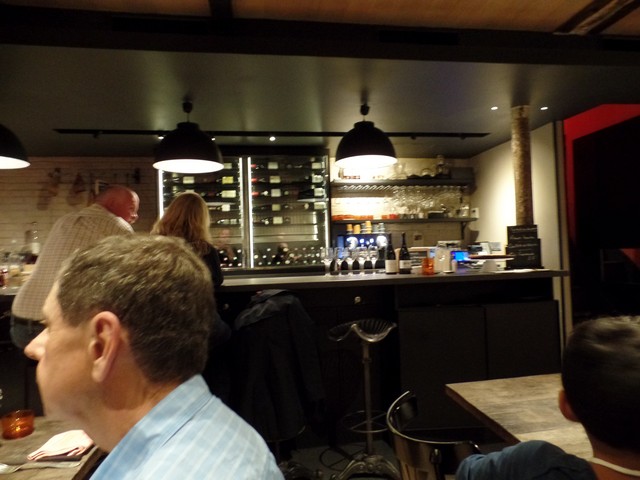
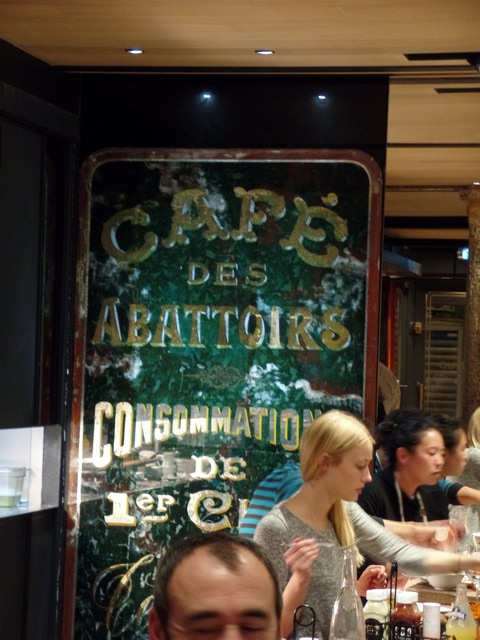
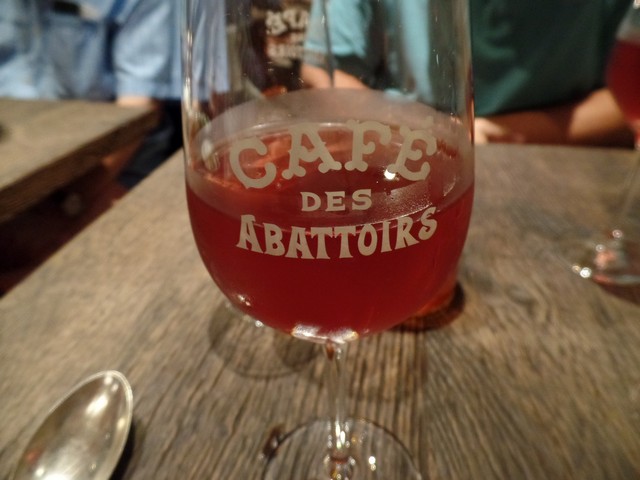
The appetizer was the "appetizers of the day" (which was basically the only option). There was a creamy mushroom soup, which was really good, and then something that I didn't quite catch all of what it was, but it seemed something like a little pizza stick with caramelized onions on top. The 3rd appetizer was raie (the skate like we had the first night) minced with a few other things and croutons. It came with a long, thin baguette.

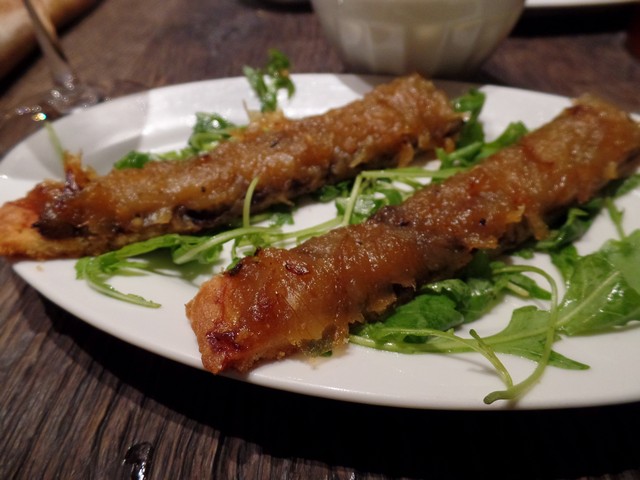
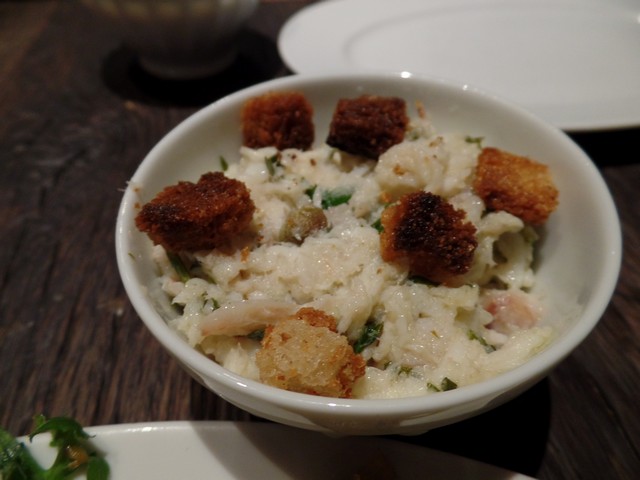
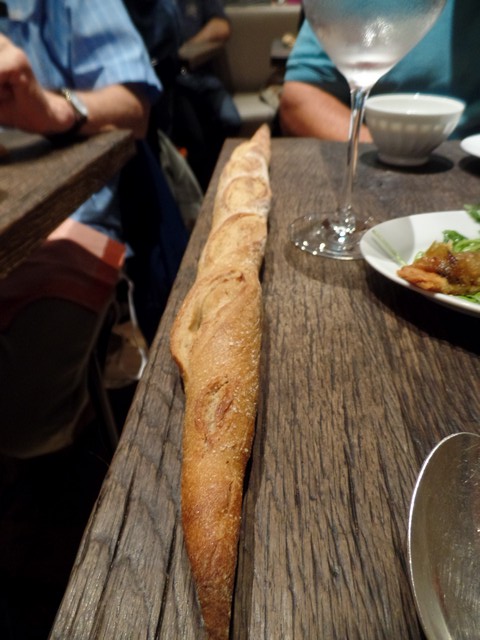
I ordered the Black Angus beef skirt steak with a "garnish" of baked baby potatoes, Tomatoes, Onions and lemon confit. Skirt steak is something that we really like when we marinate it and cook it on the grill and this was just as good! I will say that the potatoes were probably the best potatoes I have EVER eaten .. oh my gosh were they good!
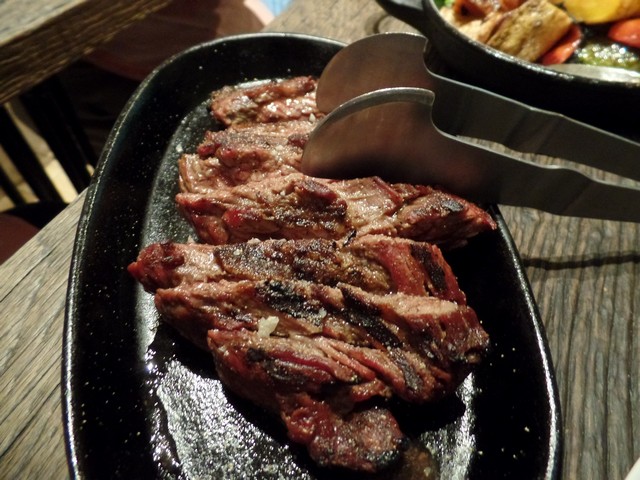

Tom took another opportunity to eat lamb, choosing the Lamb shoulder Allaiton, from Aveyron with roasted season vegetables. I didn't try any of the lamb (bleck) but Tom said it was really good. The vegetables also were really, really good.
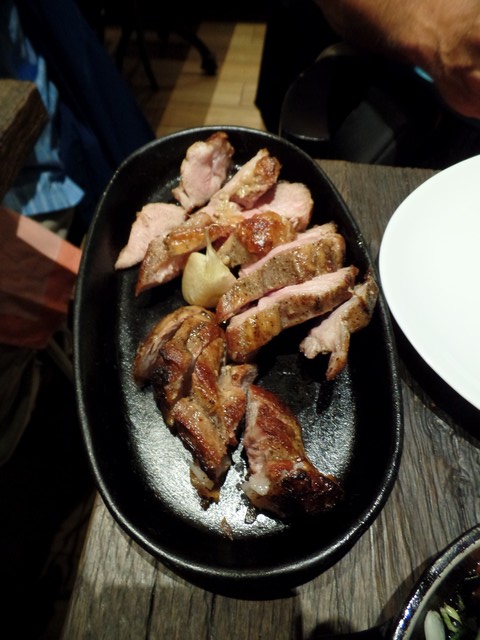
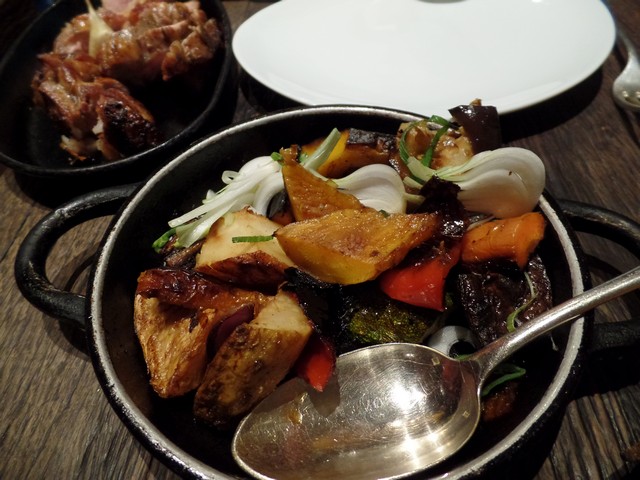
We ordered the desserts with the rest of the items, which was a really good thing. Tom ordered the Abattoirs caramelized custard cream (creme brulee) and I had the Michel Rostang's chocolate custard cream and banana muffin. After we finished the main courses, they came back and asked about ordering dessert but told us that the chocolate custard cream was already gone. I was really bummed because I had seen the menu before and was looking forward to the chocolate custard cream from Michael Rostang (the 3 star chef). Oh well, I thought .. next time, and then ordered a roast peach. He left and then came back a few minutes later and told us that it was no problem, we had already ordered and so they had set mine aside. WOO HOO! And then came out the desserts ... pretty normal from a French dessert perspective. The banana muffin was just okay, but the chocolate custard cream was great ... very rich and smooth.
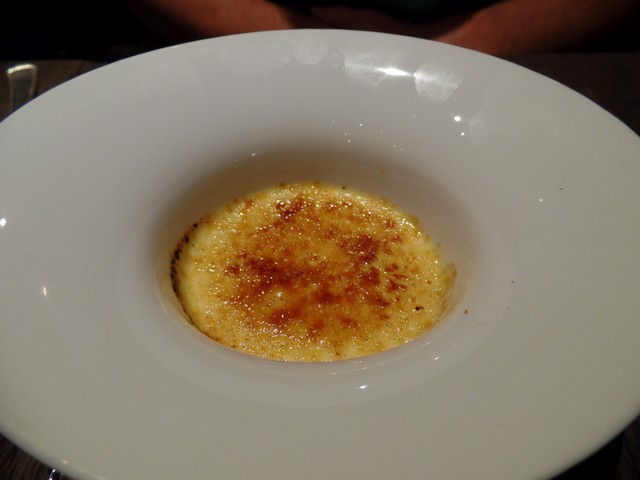
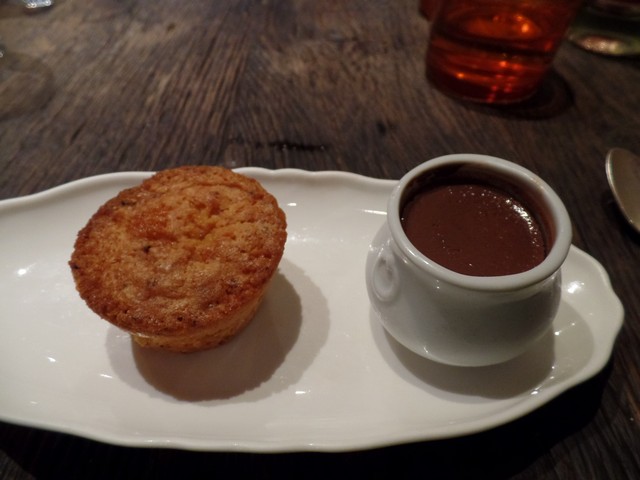
I was trying to get the glass wall at the back of the restaurant but our waiter got caught in the picture.
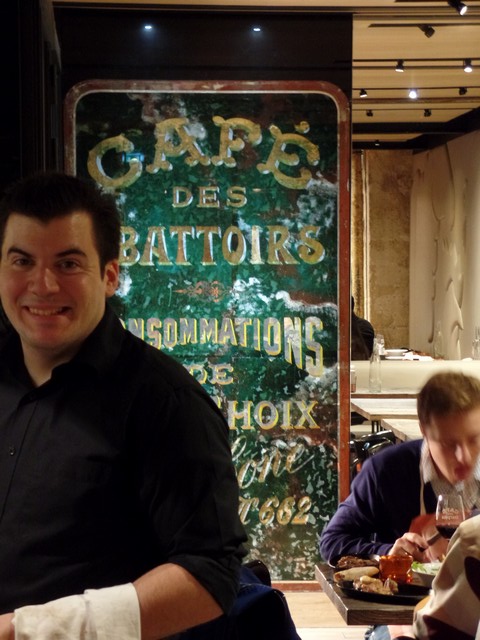
Last but not least ... the opera house at night. This is the Palais Garnier, which is the opera house which opened in 1875. It was the home to the Paris Opera and the Paris Ballet until the new opera house opened at the Place de la Bastille in 1989 and now only really used for the ballet. The Palais Garnier is probably the most famous opera house in the world due at least partly due to its use as the setting for the Phantom of the Opera. The Palais Garnier is a building of "exceptional opulence". The style is called Second-Empire Beaux-Arts style with axial symmetry in plan and eclectic exterior ornamentation with an abundance of Neo-Baroque decorative elements. These include very elaborate multicolored marble friezes, columns, and lavish statuary, many of which portray deities of Greek mythology.
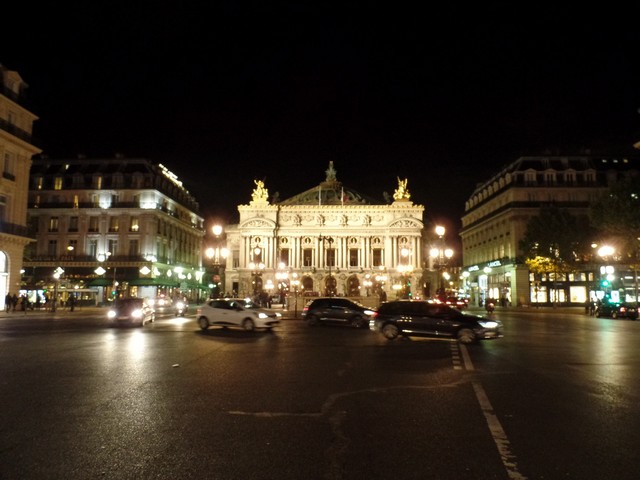
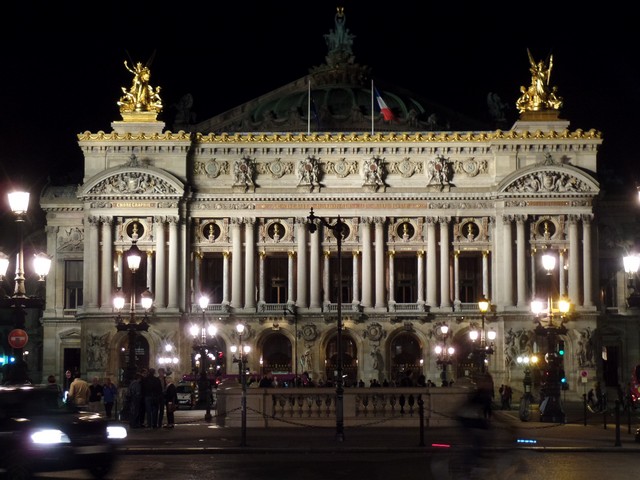
There are several other buildings around the world which were designed after or inspired by this one, including the Juliusz Slowacki Theatre in Krakow (Poland), the National Opera House of Ukraine in Kiev and the Lviv Theatre of Opera and Ballet in Lviv (also in the Ukraine). The facade and the great hall of the Thomas Jefferson Building of the Library of Congress in Washington, D.C. is modeled after the Palais Garnier as well as the great hall and the staircase of the Theatro Municipal do Rio de Janeiro. The Hanoi Opera House in Vietnam is considered to be a typical French colonial architectural monument in Vietnam, and it is also a small-scale replica of the Palais Garnier. The Saigon Opera House is a smaller counterpart.
Go to Day 4